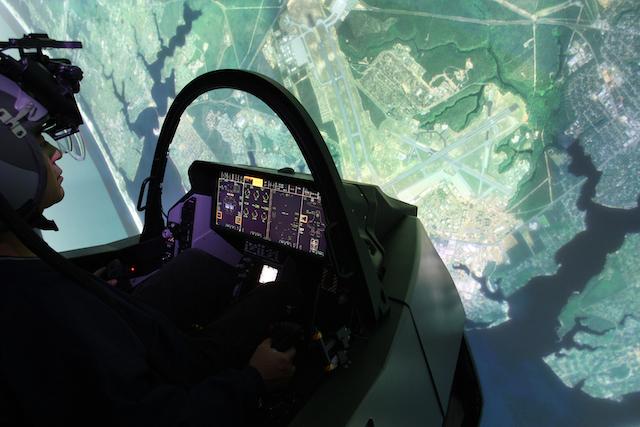
F-35A cockpit
A critical avionics refresh for the Lockheed Martin F-35 had been due to enter production later this year, but program officials now offer no firm timeline as a yearlong series of flight tests begins.
The Technology Refresh-3 (TR-3) program originally was expected to deliver a new integrated core processor, display system and aircraft memory unit starting with the first Lot 15 aircraft.
Two years ago, program officials acknowledged in congressional testimony that they were hedging for a slight delay for TR-3 deliveries, with the acquisition of about 30 TR-2 sets of hardware to avoid a break in the production line.
But program officials now say they are waiting for flight test data before TR-3 is approved to enter production on Lot 15 aircraft.
“The timing of deliveries will depend on the results of the flight testing,” a Joint Program Office (JPO) spokesman says.
The U.S. Air Force announced on Jan. 11 that the first F-35A test aircraft equipped with the avionics had entered flight testing, which service officials said was expected to continue through 2023.
But a delay in the sequencing of F-35 deliveries may help keep the TR-3 program on track for delivery in Lot 15.
Lockheed normally delivers aircraft in each yearly production lot according to their assigned order year. As the 15th lot of annual production, Lot 15 aircraft would normally begin deliveries at the start of calendar year 2023.
But Lockheed still has 72 aircraft from Lot 14 and one aircraft from Lot 13 in a production backlog due to supply chain disruption caused by the COVID-19 pandemic and other issues.
At current production rates of nearly six F-35s per month, it could take Lockheed until at least midyear to clear the backlog of Lot 13 and 14 jets. The company’s aircraft deliveries are typically back-loaded to the second half of the year, so that could extend the start of Lot 15 deliveries into late summer or the fall. Including the 30 TR-2 kits reserved in case of any further delays revealed by TR-3 flight testing, the start of deliveries of F-35s upgraded to the Lot 15 standard could slip to the fourth quarter.
Accordingly, keeping the TR-3 program on track for Lot 15 jets may depend on a relatively smooth flight testing program. But problems with developing TR-3 hardware and software caused a $330 million cost overrun in 2021, which prompted the JPO to halt Block 4 development in order to focus on resolving those issues. L3Harris delivered the improved integrated core processor for flight testing last July, but the Air Force did not start flight testing until several months later.
If TR-3 is not available on time, the JPO has informed the Government Accountability Office that it has options to keep F-35 production on track. If hardware testing is complete, the JPO can install TR-3 avionics on Lot 15 F-35s without the latest software, which could be retrofitted later. If the hardware also is delayed, Lot 15 jets can be delivered with TR-2 hardware and software until retrofits are available. But any such delay also creates timing issues for other Block 4 upgrades expected in Lots 16 and 17, including an electronic warfare upgrade coming in 2024 and a new radar arriving in 2025.





